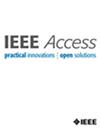Prediction of Ultra-High-Speed Spots Using RTK-GNSS Sensor Fusion for UAV-to-UAV mmWave/THz Communications
IF 3.4
3区 计算机科学
Q2 COMPUTER SCIENCE, INFORMATION SYSTEMS
引用次数: 0
Abstract
mmWave/THz communications depend on highly focused and directive narrow beams. Accurate prediction of the beam’s spatial location and attitude in space, as well as the time it takes to reach its ultra-high-speed coverage area, referred to as the ultra-spot, is crucial for uncrewed aerial vehicles (UAVs) to adjust their flight direction and approach velocity. This adjustment increases the likelihood of successful communication between UAVs. This paper introduces a novel approach for detecting these ultra-spots using real-time kinematic (RTK)-GNSS and inertial measurement unit (IMU) sensor fusion positioning powered by an extended Kalman filter (RTK-GNSS-EKF). To achieve this, we implemented a mechanism that exchanges six degrees of freedom (6-DOF) information of positions among UAVs via a 920MHz wireless communication link. Additionally, we propose an algorithm that accurately estimates the time and distance from the in-flight UAV to the ultra-spot. For the first time, this work investigates the real-world 6-DOF fluctuations in position, velocity, and attitude experienced by an in-flight UAV due to wind, and analyzes the impact of these fluctuations on the ultra-spot prediction issue. Additionally, we analyze scenarios where the ultra-spot alters its attitude by actively changing the antenna angle, assessing the consequent effects on the volume of data transmitted and received at the ultra-spot. We demonstrate the effectiveness of the proposed method by simulation and verification with actual UAV-to-UAV and UAV-to-ground-station field experiments. Experimental results indicate an average ultra-spot detection accuracy of 172ms in time and 32.7cm in distance, with measurements taken 1s before the UAV’s actual approach to the ultra-spot. These findings confirm the feasibility of the proposed method for detecting mobile ultra-spots in UAV-to-UAV mmWave communication.利用RTK-GNSS传感器融合预测无人机对无人机毫米波/太赫兹通信的超高速点
毫米波/太赫兹通信依赖于高度聚焦和定向窄波束。准确预测波束在空间中的位置和姿态,以及到达其超高速覆盖区域(称为超点)所需的时间,对于无人驾驶飞行器(uav)调整其飞行方向和接近速度至关重要。这种调整增加了无人机之间成功通信的可能性。本文介绍了一种利用扩展卡尔曼滤波(RTK-GNSS- ekf)驱动的实时运动学(RTK)-GNSS和惯性测量单元(IMU)传感器融合定位来检测这些超点的新方法。为了实现这一目标,我们实现了一种机制,通过920MHz无线通信链路在无人机之间交换六自由度(6-DOF)位置信息。此外,我们还提出了一种精确估计飞行中无人机到超点的时间和距离的算法。本文首次研究了现实世界中无人机在位置、速度和姿态上受风影响的六自由度波动,并分析了这些波动对超斑预测问题的影响。此外,我们分析了超点通过主动改变天线角度来改变其姿态的场景,评估了对超点传输和接收数据量的后续影响。通过仿真和实际的无人机对无人机和无人机对地面站的现场实验验证了所提出方法的有效性。实验结果表明,平均超光斑检测精度为172ms,距离为32.7cm,在无人机实际接近超光斑前15秒进行测量。这些发现证实了所提出的方法在无人机对无人机毫米波通信中检测移动超点的可行性。
本文章由计算机程序翻译,如有差异,请以英文原文为准。
求助全文
约1分钟内获得全文
求助全文
来源期刊

IEEE Access
COMPUTER SCIENCE, INFORMATION SYSTEMSENGIN-ENGINEERING, ELECTRICAL & ELECTRONIC
CiteScore
9.80
自引率
7.70%
发文量
6673
审稿时长
6 weeks
期刊介绍:
IEEE Access® is a multidisciplinary, open access (OA), applications-oriented, all-electronic archival journal that continuously presents the results of original research or development across all of IEEE''s fields of interest.
IEEE Access will publish articles that are of high interest to readers, original, technically correct, and clearly presented. Supported by author publication charges (APC), its hallmarks are a rapid peer review and publication process with open access to all readers. Unlike IEEE''s traditional Transactions or Journals, reviews are "binary", in that reviewers will either Accept or Reject an article in the form it is submitted in order to achieve rapid turnaround. Especially encouraged are submissions on:
Multidisciplinary topics, or applications-oriented articles and negative results that do not fit within the scope of IEEE''s traditional journals.
Practical articles discussing new experiments or measurement techniques, interesting solutions to engineering.
Development of new or improved fabrication or manufacturing techniques.
Reviews or survey articles of new or evolving fields oriented to assist others in understanding the new area.
 求助内容:
求助内容: 应助结果提醒方式:
应助结果提醒方式:


